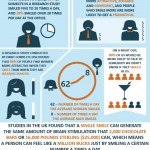Can you Benefit from Cosmetic Dentistry?
What is Cosmetic Dentistry?
The English meaning of the term ‘cosmetic dentistry’ includes any dental work or process that is primarily aimed at improving the appearance (and not necessarily the function) of a person’s teeth, gums and/or bite, facial expression etc. Because of popular demand many dentists prefer to call themselves as “cosmetic dentists” regardless of whether they have any specialized education, training, and experience in this field.
What is it?
Cosmetic dentistry generally involves all the procedures which are aimed at enhancing the facial esthetics, such as, teeth whitening (bleaching), scaling, teeth straightening, gum depigmentation, oral (tongue) piercing, lip piercing, etc. another field of cosmetic dentistry involves processes and operations wherein, missing or lost dental or maxillofacial tissue is replaced with artificial tissue, and any offending tissue or structure is removed. Examples include bonding, installation of porcelain veneers, placing crowns (caps), gum grafts, removal of tooth structure or gums e.g., enameloplasty, gingivectomy, etc.
Some Major Cosmetic Operations
Tooth bleaching and tooth whitening together are, probably, the most popular operations performed in cosmetic dentistry. According to the FDA, tooth whitening restores natural color of the teeth, while bleaching goes beyond. Many do it yourself (DIY) options are available using over the counter products. A broad variety of products is available in the market. Mostly carbamide peroxide is the active agent which with water gives the required hydrogen peroxide. However, it is certainly more advisable that bleaching be supervised by a qualified dentist to avoid any unintended damage.
Teeth Reshaping: This process involves trimming away part of the stained enamel to improve the appearance of visible teeth. It may also be used to adjust length of teeth which are too long, to reduce an apparent crook in a tooth, or to adjust width of a tooth. It must be noted that enamel once removed is not replaceable. Reshaping by trimming of enamel is a short process which can be completed in a single visit. It is also called sculpting.
Tooth Braces: Wire braces are commonly used to correct or reshape a number or teeth together. Similarly other implements may be used to correct under or over bite. A number of visits to the dentist over an extended period of time are required for such operations. The cost is also proportionately high.
Bite Reclamation: Chronic acid reflux or a habit of excessive grinding can give a person a closed bite or shorter facial look. It may also affect the smile. Qualified professionals can correct their bite, and as a result, even improve the facial appearance.
Crowns or caps: While basically used for protection of endangered teeth, crowns are also used for cosmetic purposes. In the former case mostly the molars are involved, although front teeth damaged accidentally may also be crowned. Cosmetic crowning will normally be done on the front teeth.
Dental bridges: A missing or lost tooth may be replaced by a false tooth bonded to two crowns on neighboring teeth on either side. Bridges will need to be given special attention in routine oral cleanliness. These bridges are permanent.
Veneers: Veneers are special ultra-thin porcelain laminates which are bonded directly to tooth surface. These could be an option if whitening is not successful. These are permanently attached, but may be removed, if necessary, by a dentist.
Bonding: A special dental composite which resembles dental enamel may be applied to a tooth surface and sculpted into the correct shape. Then it is hardened and polished to give a natural appearance.
What a Smile Can Do For You
If you checked out our National Smile Day Infograph on October 2nd, you know the benefits a smile can give you. Attractiveness, sociability, and confidence all get boosts from smiling. But you’re only going to smile if you feel good about showing off your teeth. The above options are all available at our Fort Worth office, so give us a call for a consultation. As Zen Buddist Monk and teacher Thich Nhat Hanh said, “Sometimes your joy is the source of your smile, but sometimes your smile can be the source of your joy.” H. Peter Ku, D.D.S., PA will help you have moments of both.




